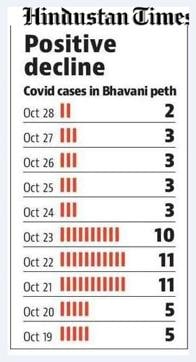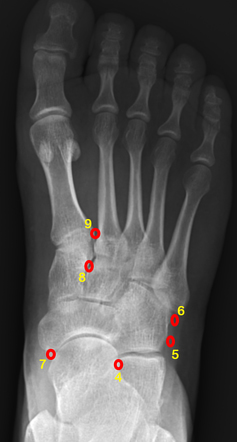Hospitalization data from the U.S. Department of Health and Human Services; 14-day change trends use 7-day averages. At least 483 new coronavirus deaths and 70,355 new cases were reported in the. World Health Organization Coronavirus disease situation dashboard presents official daily counts of COVID-19 cases and deaths worldwide, along with vaccination rates and other vaccination data, while providing a hub to other resources. Interactive tools, including maps, epidemic curves and other charts and graphics, with downloadable data, allow users to track and explore the latest trends. Mar 16, 2021 ZIP codes with higher rates of cases per 100,000 residents appear as a darker shade of blue than zip codes with lower rates of cases. These data do not necessarily mean that one zip code or neighborhood is more or less safe than another. An increase in the number of tests completed in any one zip code can affect zip code case counts and rates. Select the images to display more information. Official websites use.gov. A.gov website belongs to an official government organization in the United States.
The number of new daily coronavirus cases has been falling steadily during this year's lockdown and the number of deaths continues to decrease.
Sky News has put together a series of indicators to help you gauge how the situation has changed in the last few months, how it is looking right now and the risk to you personally.
What's happening across the country?

The COVID-19pandemic in the UK appears to have slowed down following a peak for infection rates and deaths in January which broke records set during the first peak last spring.

High vaccination rates among the elderly and vulnerable have contributed to this decline.
Confirmed cases have flattened out again but this could be due to the number of tests now available.
But every local authority is different. The chart below can show you how many new confirmed cases have been recorded every day in your area.
Enter the name of your lower-tier local authority (not your county) to find out what's been happening.
Comparisons between recent and past cases should be made with caution. The number of confirmed cases is heavily dependent on how many people are tested - and who they are.
This has changed significantly since the start of the pandemic, with the number of tests processed each day increasing significantly. Community testing has also expanded, whereas previously access was limited to symptomatic patients and key-workers.
The number of confirmed cases is also a fraction of the total cases.

The true figure is unknown, as many infected with coronavirus either do not show any symptoms or, perhaps, aren't so badly affected that they have gone for a test. And only those who have tested positive are recorded.
Since April, the graph below shows the share of tests that have had a positive result.
The World Health Organisation said in May that, in order for an epidemic to be under control, less than 5% of tests in the last 14 days should be positive, so long as at least one out of every 1,000 people overall is being tested every week.
Which areas are currently worst?
The number of people who have tested positive in the last two weeks - called the two-week rate - is a useful indicator of where the situation is worst at any one time.
The following table ranks local authorities by two-week rate - the higher the number, the more people have tested positive per person in the last fortnight.
This same information on a map shows how higher rates are occurring in geographic clusters. This is important as it shows the likelihood of meeting someone who is infectious who lives nearby.
Where are things getting worse or better?
The table below shows the areas where the number of new cases are rising and falling. It shows only areas with more than 20 new COVID-19 cases recorded in the last two weeks.
Is the virus spreading?
The way of measuring the speed at which the virus is passing from person to person is to look at the reproduction number. When this R number is well below 1, a disease dies out.
R varies in different populations and it changes over time. It is very much affected by people's behaviour and restrictions such as lockdown.
The government is publishing SAGE's estimate of R every week. This number does not come from a single model, but SAGE uses different academic groups to come to a consensus.
Where has the virus hit hardest?
The table below shows the areas with the highest rates of confirmed coronavirus cases since the beginning of the epidemic in the UK. The rates are the number of people who have been found to have been positive per 100,000 population in that authority since March 2020.
Cases shown in this table include those found from tests done by the NHS and Public Health England and commercial partners working in local communities.

COVID-19 case data should be treated with some caution, as not everyone who has contracted the disease has been tested and, therefore, counted.
Use our map to follow flu-risk trends and predictions in your area. Enter your ZIP code or click on the map to get started.
How Does This Flu Forecast Map Work?
By entering your ZIP code, you can find out what influenza conditions may be like in your county in the weeks ahead.
Our methodology takes into account current and historical data from the Centers for Disease Control and Prevention (CDC), rising and falling interest in the flu on social media platforms and in online searches, and local and regional weather information. The flu map predicts flu severity county by county across the United States so you can plan ahead and take precautions to avoid the flu — both at home and in places where you plan to travel.
Common Symptoms of the Flu to Look Out For
Influenza symptoms typically include:
Cases In My Area Bbc
- Fever
- Chills
- Headache
- Muscle aches
- Runny nose
- Fatigue
The Flu and COVID-19 ‘Twindemic’
While cases of COVID-19 continue to climb in the United States, experts warn of a looming “twindemic” — flu season commingled with the ongoing coronavirus pandemic.
With more than seven million cases of COVID-19 and 200,000-plus deaths in the United States (and counting), the potential impact of the coming flu season is cause for concern. What can you do to protect yourself? Most important on the prevention list is getting a flu vaccine, as well as taking steps to stave off both the flu and COVID-19, such as hand-washing, social distancing, and wearing a mask.
Number Of Cases In My Area
More About the Flu
For more on the flu, the double threat of the flu and COVID-19, and expert advice on how to stay healthy, go to:

Coronavirus Cases In My Area
By subscribing you agree to the Terms of Use and Privacy Policy.
